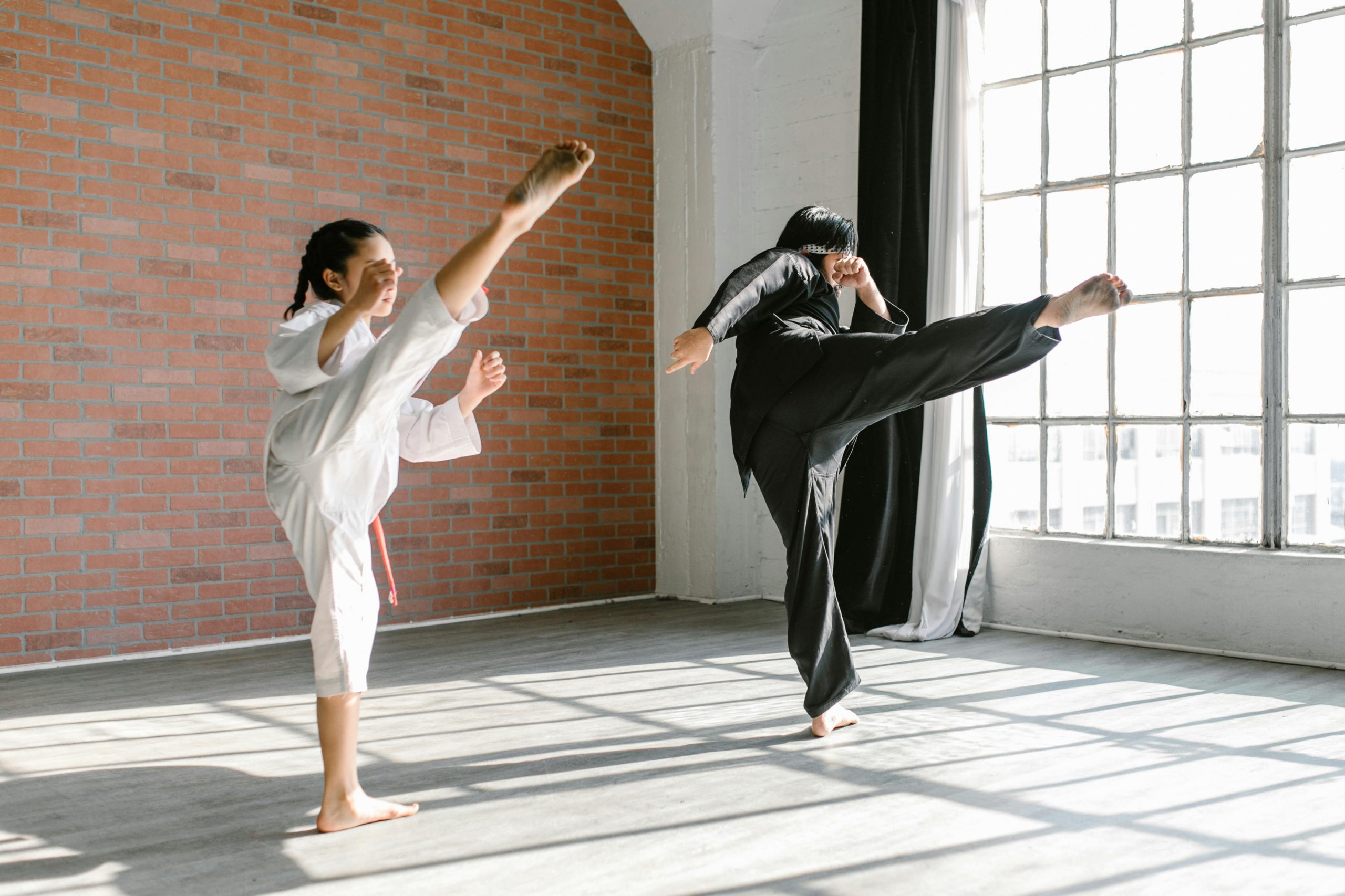If you just landed on this page and haven’t yet read “The Secret to Kicking Higher – Part 1”, check it out here. It will get you caught up to speed on the details that follow.
That said, let’s continue with this concise course on improving kicking technique.
Muscle Activation 101: Strengthening “End Range of Motion”
Muscle activation is a fancy term for targeted isometric contractions, often at the end range of motion, where the prime movers are in their shortest position. For roundhouse kicks, this means focusing on the hip flexors and hip abductors (the muscles at the front and side of your hips, respectively). Activating these muscles in this fashion mimics the muscle recruitment patterns during the kick. Muscle activation techniques are not only extremely effective at stimulating end range of motion strength, they are also quite easy to perform, allowing you to hack your way to higher, more precise movements without month after month of repetitively kicking in hopes for improvement. Prior to discovering these techniques, that is precisely what I did for years, and didn’t make much progress. How very frustrating…
How to Diagnose the Problem: Flexibility vs. Strength
Here’s a quick test you can do to determine what’s holding your kick back from optimal performance:
- Warm Up: Perform your exercises and stretches as you normally would for your kickboxing or martial arts workout.
- Test Your Kick: Perform a roundhouse kick as high as you can, with safety in mind, of course.
- Assess Tightness: Focus on your stance leg. Do you feel tightness in the hamstrings (behind the leg) or adductors (inner thigh/groin)?
- If yes: It’s a flexibility issue; stretch the same muscles where you felt the restriction.
- If no: It’s a strength issue; time to activate the prime movers of your kick leg!
Simple Muscle Activation Drills for Roundhouse Kicks
While there are dozens of different ways of performing muscle activation techniques to improve your roundhouse kick, I have included 2 simple ones that you can try.
To strengthen your hip flexors:
- Sit in a chair with feet hip-width apart, knees in alignment with feet and hips.
- Lean forward from the hips (not the spine), maintaining an anterior pelvic tilt (imagine your pelvis as a bucket pouring water forward). Be diligent in keeping your back very straight the entire time.
- Hold the position for 20-30 seconds.
- If done correctly, you should feel a strong contraction sensation near the crease of the hip.
To strengthen your hip abductors:
- Sit in a chair with your feet wider apart and slightly externally rotated (feet and knees should be pointing 45* outward from the midline of the body).
- As with the previous exercise, lean forward, maintain anterior pelvic tilt, and keep your back straight. Once in position, forcefully abduct your hips (try to move your knees outward/apart from each other).
- Hold this position for 20-30 seconds.
- If done correctly, you should feel a strong contraction sensation in the lateral aspect of the hip (deep butt muscle).
After completing these drills, retest your roundhouse kick. If weakness of the primary movers of your kicking leg was the issue, you’ll likely notice an immediate improvement.
Kinetic Kickboxing: The Synergy of Art and Science
At Kinetic Kickboxing Academy in Pasadena, we’re passionate about innovation. By blending functional anatomy with cutting-edge training techniques, we empower our students to achieve faster, stronger, higher kicks (with more ease and precision) safely and efficiently. Our novel approach is quite divergent from traditional methods that tend to rely heavily on repetitive kicking drills and flexibility. We are firm believers in training smarter, not harder. Why wait years to master a skill when you can fast-track your progress with science?
The secret to kicking higher with more precision isn’t just about flexibility — it’s about understanding the integrated muscles that are responsible for performing, stabilizing, and controlling/decelerating the kick (crucial in avoiding knee injury). By understanding the interplay between biomechanics and the artistry of martial arts techniques, you can fast track the development of kicking potential, and break through whatever plateau you may have been experiencing. we’re not just teaching kickboxing techniques; we’re rewriting the playbook for martial arts training. So, what are you waiting for? Take the leap, and let’s kick it up a notch (pun intended)!
If you are curious to try a Kickboxing Class in Pasadena, reserve a spot on our homepage. We would love to have you!
